These posts are not for foraging. They are intended for entertainment and intellectual satisfaction only. These posts are not a field guide nor comprehensive in any way - their accuracy is not assured in any way. Do not eat wild mushrooms unless you are a professional, have substantial professional assistance or have a wealth of personal experience with a specific species. Do not make any foraging decisions based on these posts. To do so could be dangerous or life threatening.
These Posts Contains No Information Regarding Edibility Or Toxicity
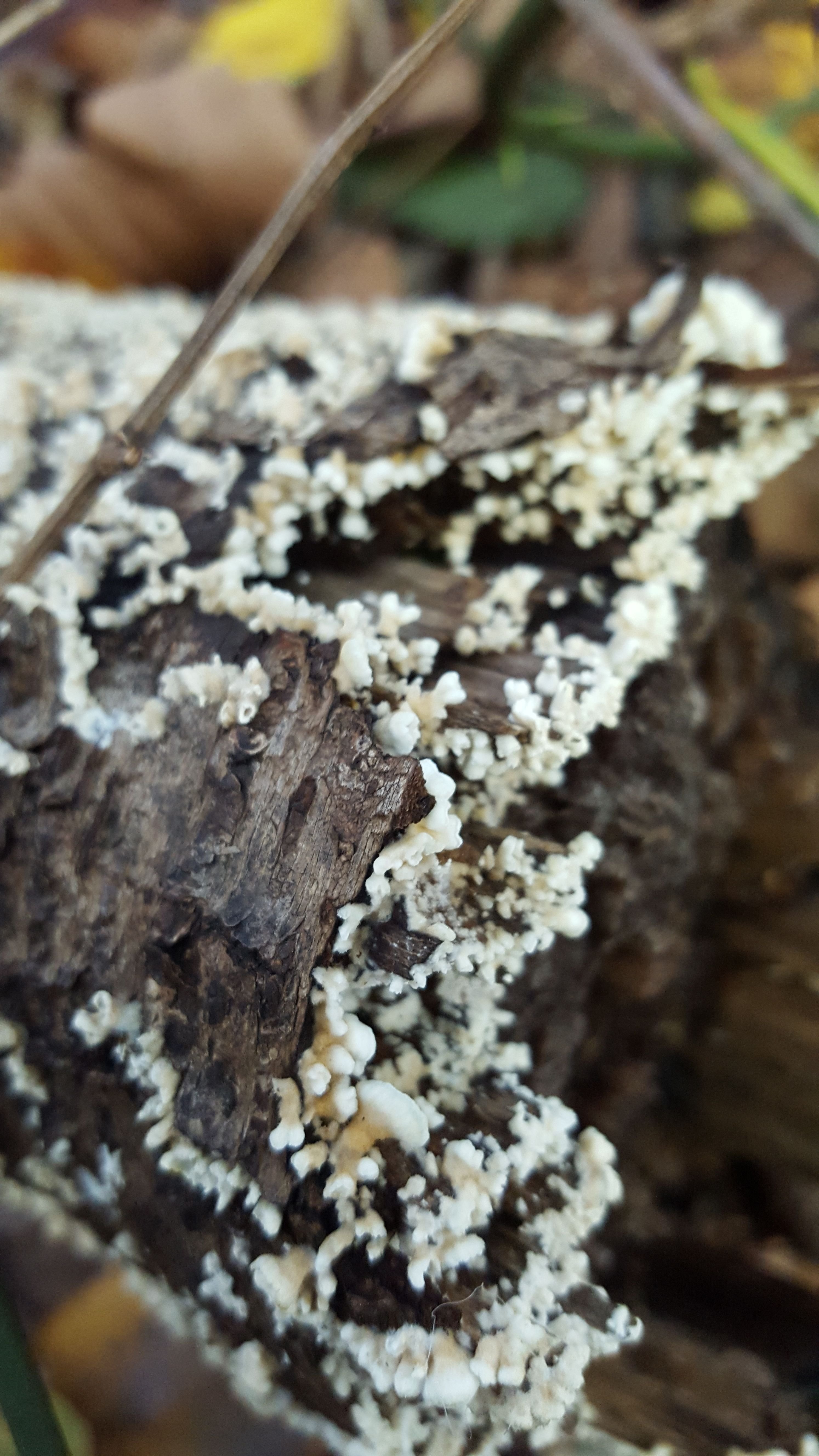
Fungi are some of the most important organisms on Earth
About 1 month ago, I made a post about mushrooms and tree health in NYC, which painted a fairly negative picture of public trees slowly being overcome by invasive parasitic mushroom species - primarily a couple of Ganoderma species that are wreaking local havoc.
Parasitic mushrooms can cause a substantial amount of damage to the urban tree landscape, especially if the fungus is an invasive species. Moreover, it's important that locals learn about the problem, because the citizens of a city can really help address the issue: both by identifying and reporting fungal infections to municipal authorities, while also taking more care not to cause external damage to urban trees.
However, although it is important to draw attention to the problem of destructive urban tree infections, it is also imperative to highlight the absolutely irreplaceable, singularly important role that fungi play in support of all terrestrial life on planet Earth.
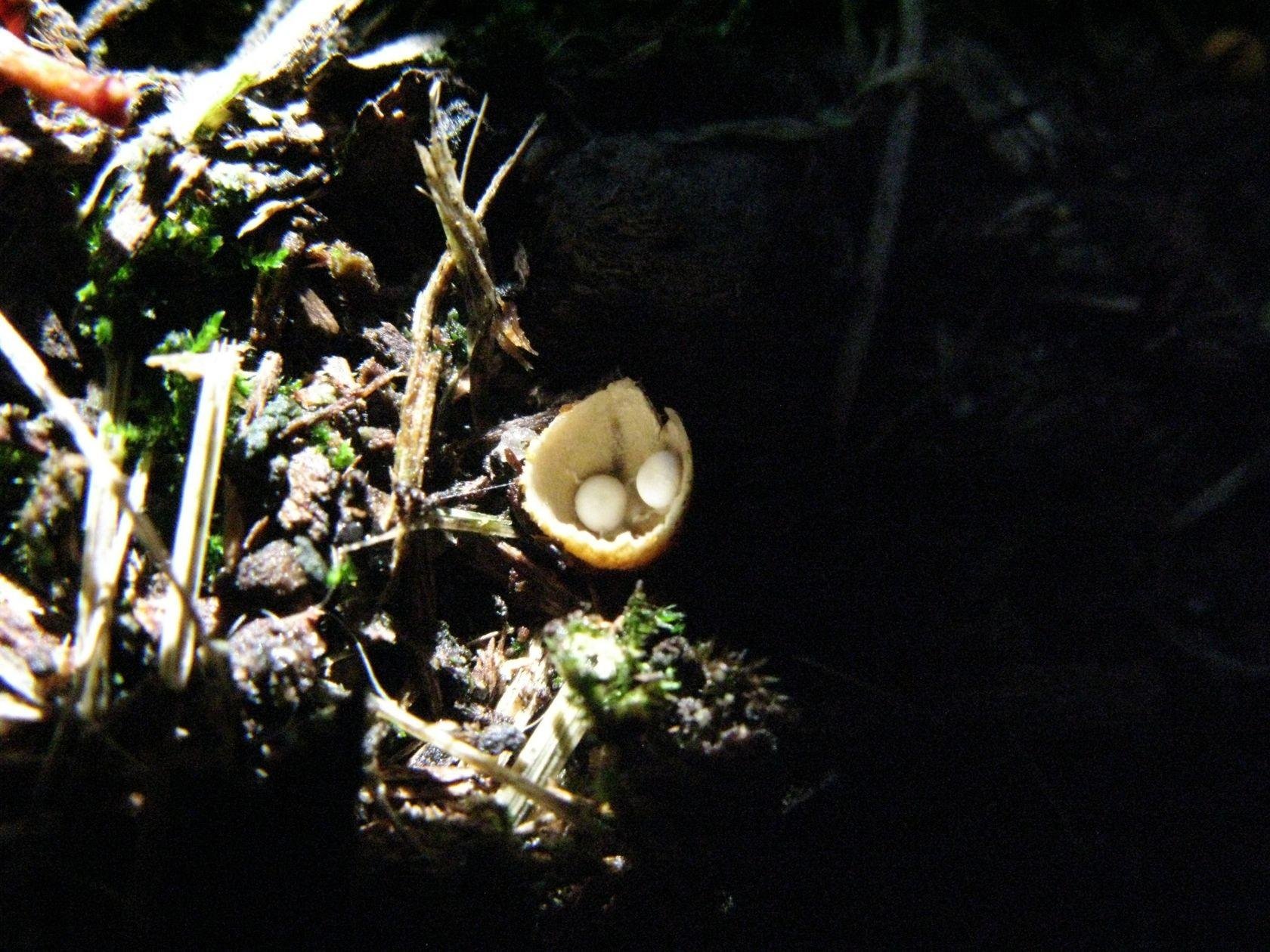
Fungi can be found, in some form or another, in most terrestrial ecosystems on our planet.
We have already seen a small, but nonetheless highly variable, cross section of just how visually diverse fungi can be.
But, practically speaking, mushrooms usually play one or more of three basic roles in the ecosystem within which they live. Depending on the role the mushroom plays, and therefore how the mushroom grows, we refer to them as either mycorrhizal, saprobic, or parasitic:
- Directly supporting plant life = Generally Mycorrhizal
- Sapping nutrients from other life = Generally Parasitic
- Recycling the dead organic material of other life = Generally saprobic
Of course, these characterizations are generalized for the purposes of explanation. Many mushrooms play multiple roles and wear multiple hats. For instance, some weakly parasitic mushrooms, like Grifola frondosa slowly weaken their tree hosts, while still providing some degree of Mycorrhizal support. However, for explanatory purposes, we will talk about mushrooms in broad strokes as falling into one of these three categories.
There will be three posts in the coming weeks which talk about the roles of each category of mushroom, in order to give an overview of fungi's versatile and unique importance on Earth.
Today, we're going to focus on the saprobic mushrooms - mushrooms which survive on dead organic matter. These predominantly white rot fungi function as the great organic recyclers of planet Earth.
But before we talk about the "solution" saprobric mushrooms provide, we first need to understand the primary "problem" that needs addressing - WOOD.
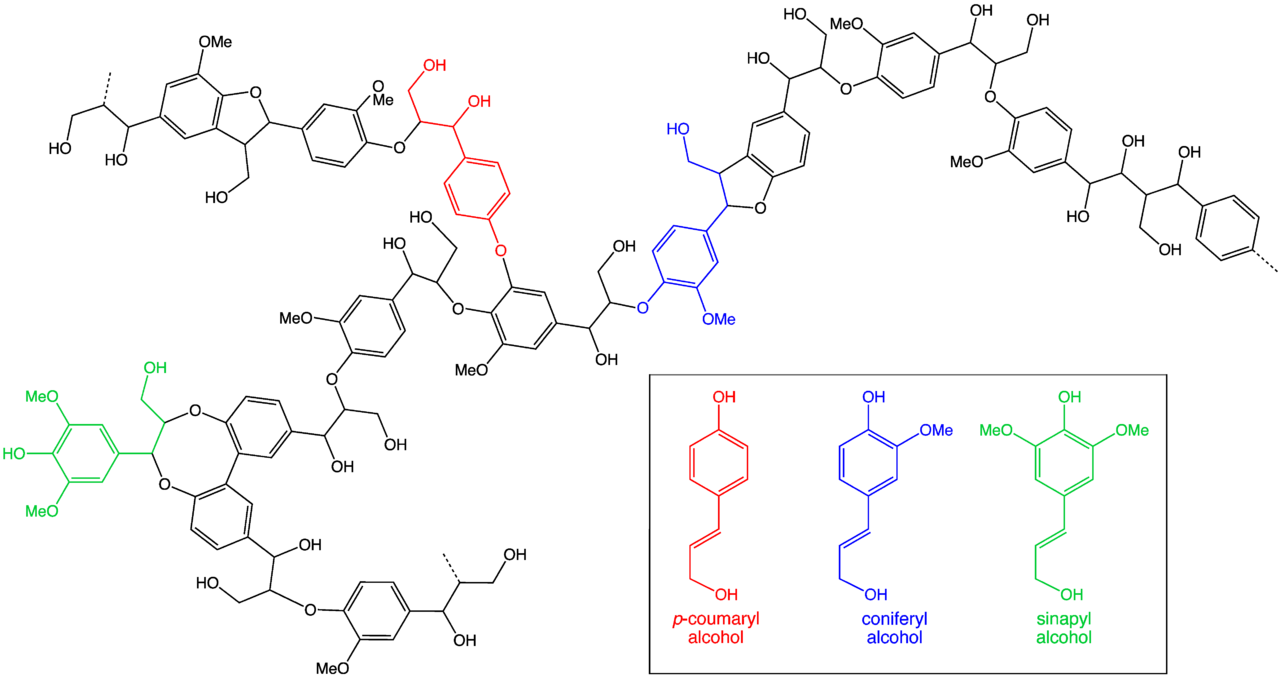
This is one potential chemical structure for a substance called LIGNIN
Lignin is a naturally occurring organic polymer, and arguably the most important substance in making wood feel and behave the way it does. The simplest way to think of lignin is as a kind of strengthening glue inside of the cells of a tree. It is lignin that gives tree cells, and hence wood, the strength and rigidity that define wood as we understand it. Without lignin, there would be no trees, or at least, nothing we would identify as a tree.
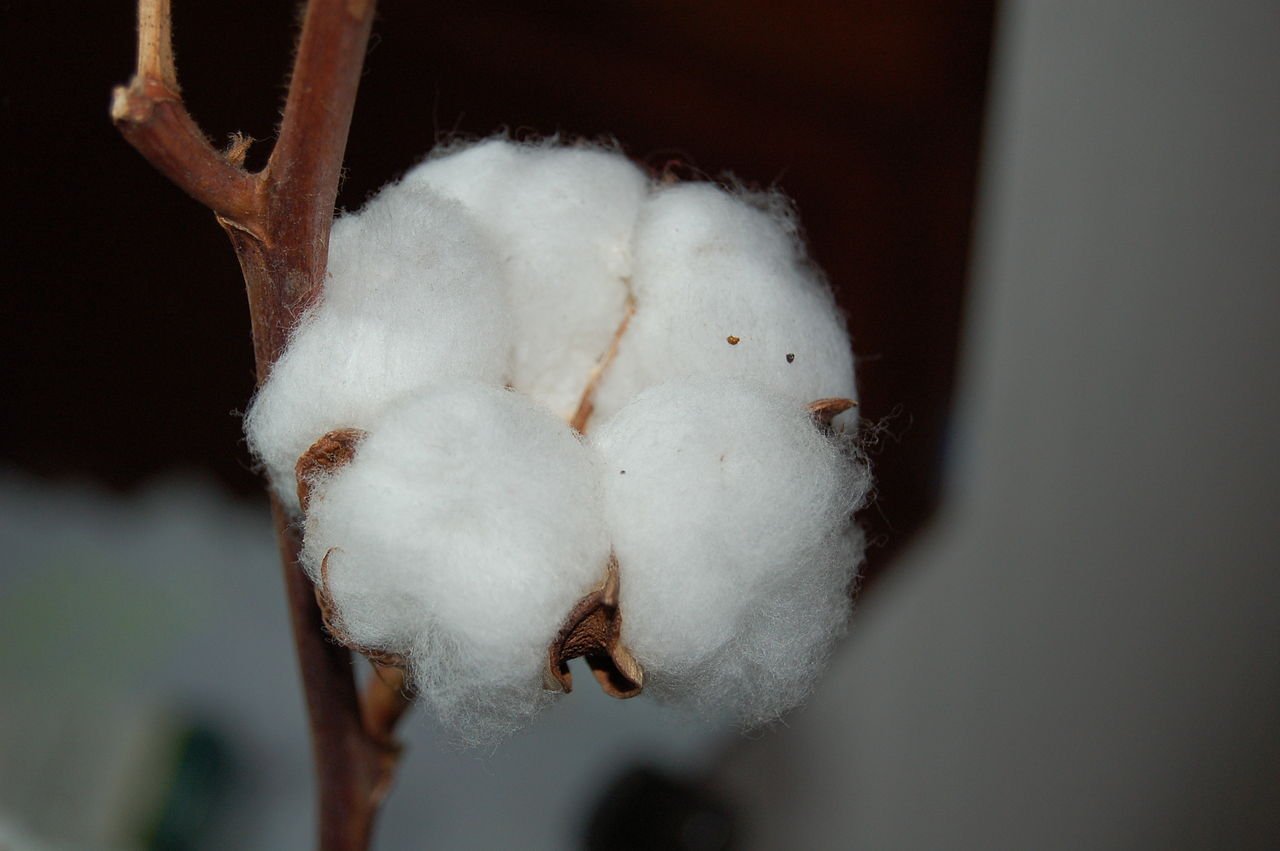
Wood consists primarily of cellulose, hemicellulose, and lignin. Cellulose and hemicellulose lack the physical strength and rigidity necessary for a tree to grow tall. Cellulose can be a tough little substance - consider, for instance, the ball of cotton to the left, which is 90% cellulose and allows us to harvest a tough, malleable fiber. However, neither cellulose nor hemicellulose allow for the kind of strength we see in wood.
Lignin is the magic polymer that evolution stumbled upon to allow trees to grow tall and strong. It binds the spaces between cellulose and hemicellulose and holds them firmly in a matrix that, taken together, we know as wood. This is awesome, and without lignin, we would have no trees.
But, lignin also presents a problem: it is not easy to break down. There is a reason neither you, me, nor any animal on Earth can straight up eat wood - our bodies completely lack the ability to break down lignin. Plus, it turns out we're not alone in that.
For a long time, over 50 million years, almost nothing could break down lignin. This period, from 359.2BC to 299BC, is referred to as the Carboniferous Period , and it is responsible for the bulk of coal on the planet.
During the Carboniferous Period, trees ran wild. For millions of years, the lignin in tree cells could not be digested by anything. The result is trees growing to monstrous sizes, dying, and then just laying there, for millions and millions of years. Of course, wood could still be destroyed by fire - but without a biological process for breaking lignin down, a lot of wood just accumulated. Much of it turned to peat, and over geological timescales, into coal.
Then, around 299BC, something changed - fungus learned to digest lignin! Genetic testing can even pinpoint that the genes which enabled lignin digestion first appeared in fungus right around the end of the Carboniferous period!
Once fungi evolved to digest lignin, the entire world changed and, slowly, transformed into the eco-systems familiar to us today.
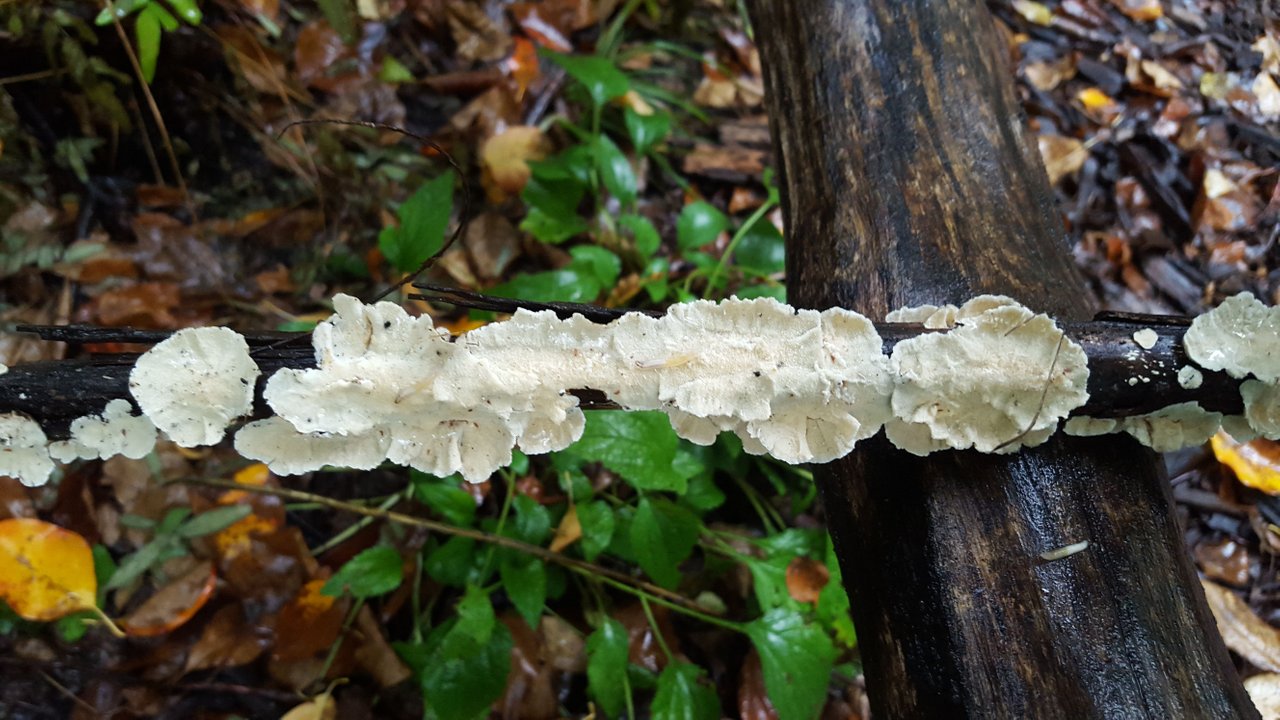
Today, terrestrial life is in a constant state of organic flux, fueled in no small part by saprobic mushrooms like the delicate polypore above.
When you walk through your local forest, the reason you aren't climbing over the accumulated mass of thousands of undeteriorated dead trees is because of mushrooms. You also have mushrooms to thank for naturally fertile soil, as well as your artificially facilitated compost heap.
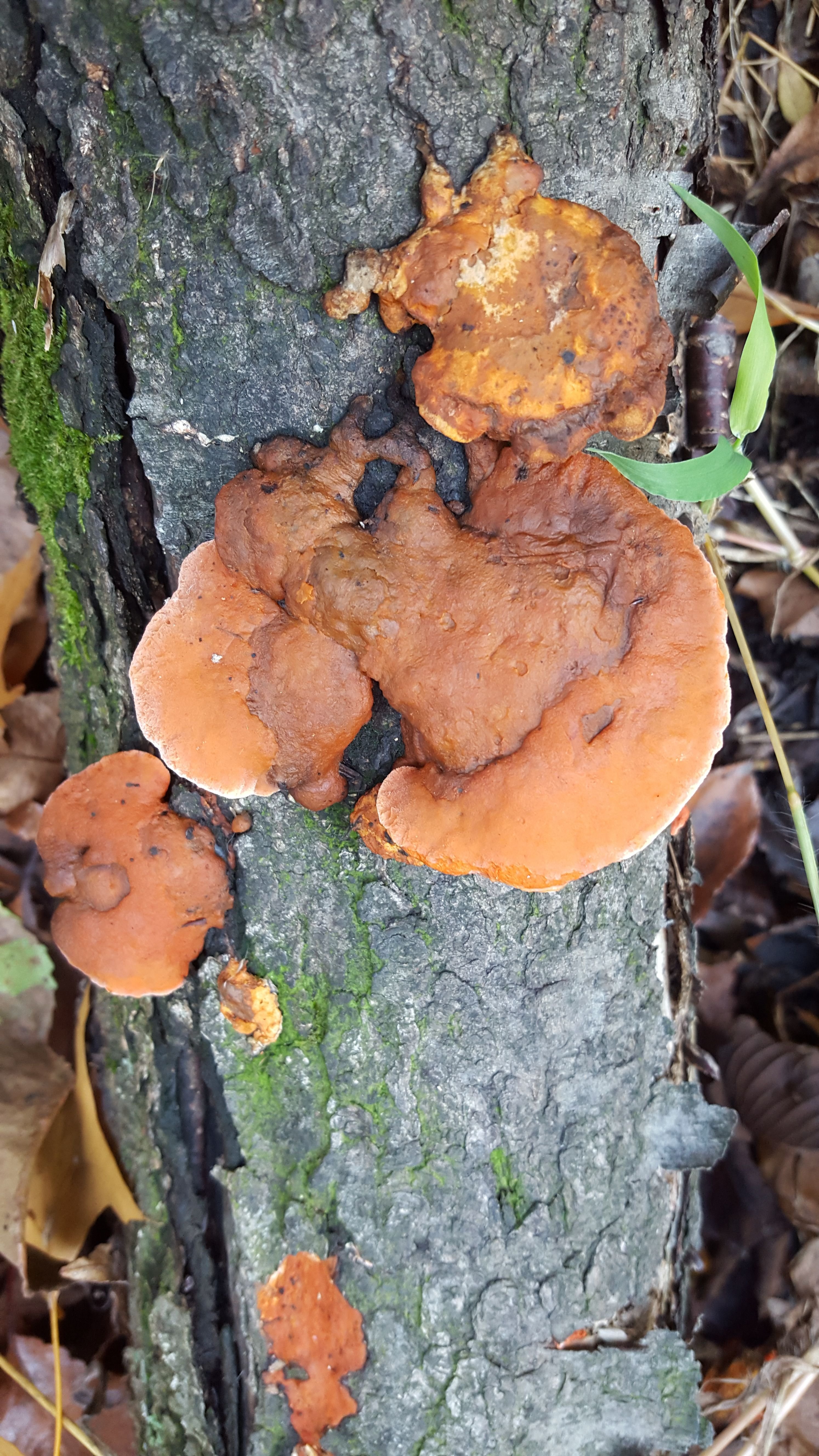
For now lets focus on wood. Usually the task of digesting wood falls to "white rot" mushrooms. "White rot" refers to the color of the area where the mycelium is digesting the dead wood. Examples of white rot fungi include Pleurotus ostreatus, the oyster mushroom, and Pycnoporus cinnabarinnus, pictured to the left. Both of these fungi produce the mycological enzyme Laccase, which is capable of breaking down lignin.
Some wood digesting saprobes create a brown rot, including most Ganoderma species. They also produce wood digesting enzymes, including laccase.
White and brown rot fungi can even live and thrive together on the same substrate if there is enough room.
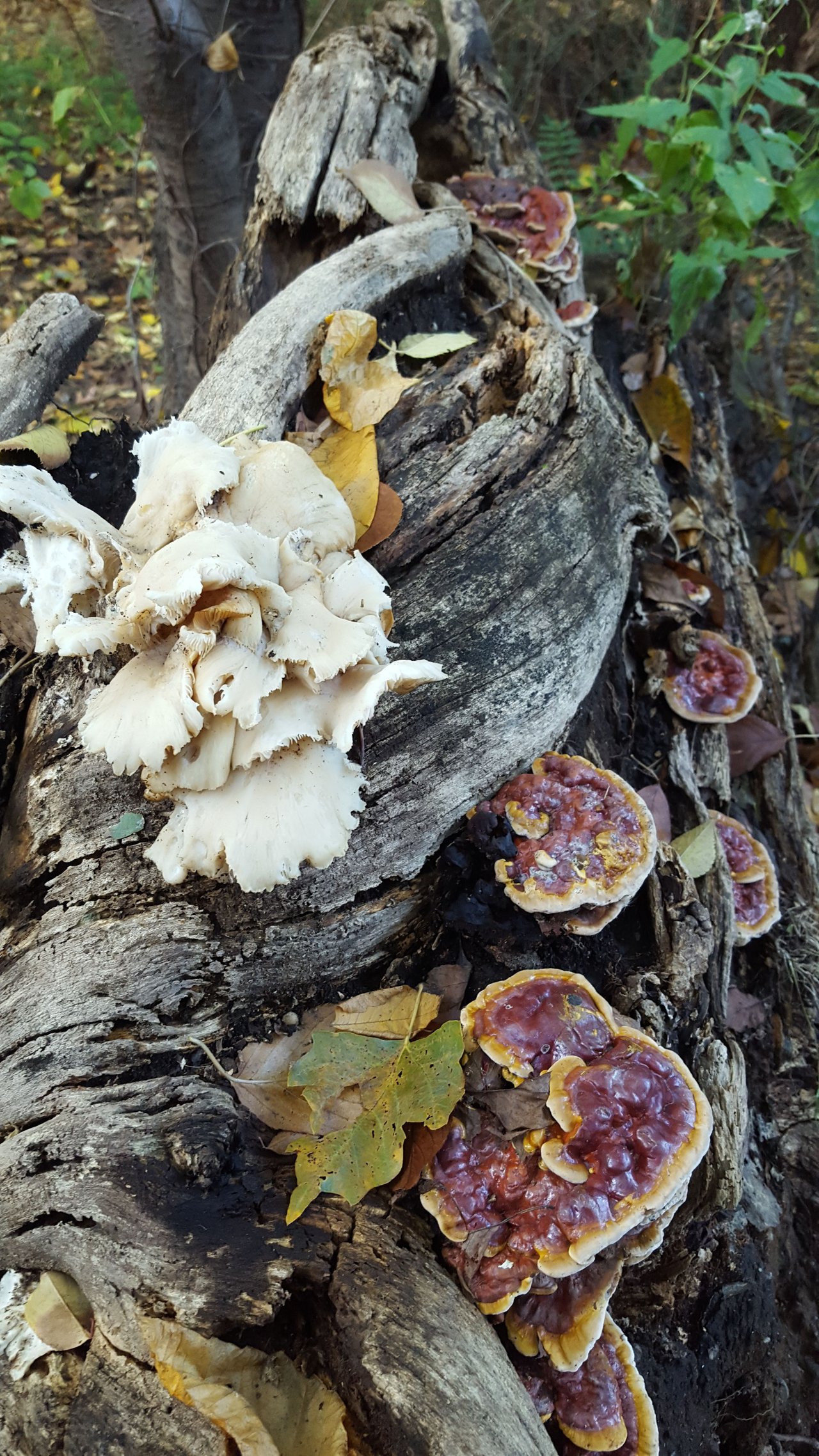
Here a giant dead tree trunk hosts large colonies of both white rot oyster mushrooms and brown rot Ganodermas.
Some wood eating fungi act on large, externally obvious pieces of wood, like downed tree trunks and stumps. But when a tree dies, it leaves behind a large network of hidden roots, sometimes ranging far underground. These tree roots are also digested by saprobic fungi, often in a way that makes the mushroom look terrestrial rather than wood growing.
Take this large Ganoderma floret. By definition, it must be growing on hidden wood.
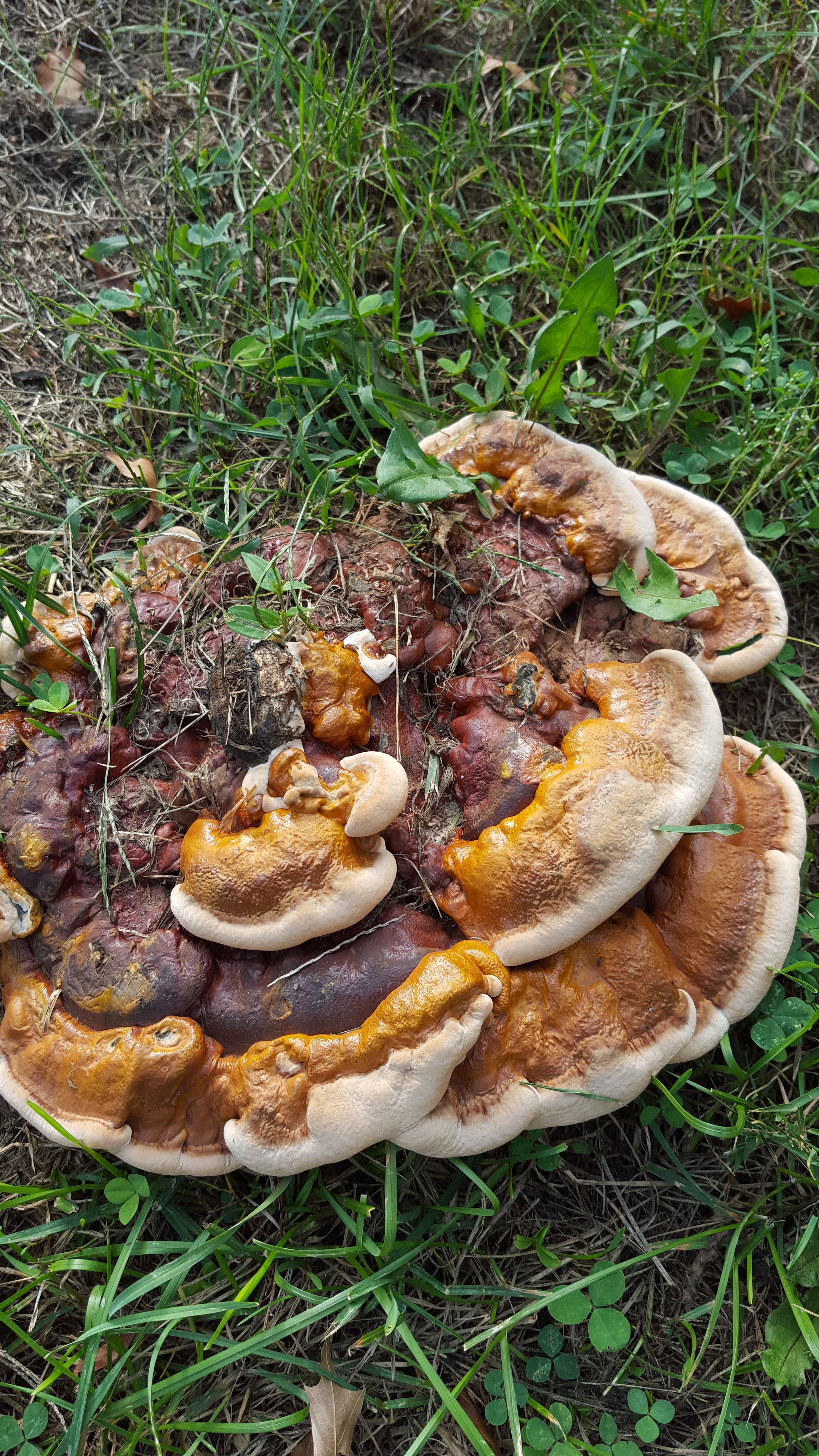
By digesting hidden tree roots, it is both clearing space for future new root growth and enriching the local soil.
Saprobic mushrooms digest wood in the form of large logs and trunks, but eventually those large pieces of wood break down into mulch, or woody debris and soil.
But the work of saprobic fungi does not end once a log is no longer visibly identifiable as a log. Different saprobic mushrooms digest different forms, sizes and species of wood, as well as other kinds of organic waste entirely.
Consider one of my favorite recurrent local finds, Phallus rubicundus

P.rubicundus does not have the means of digesting undamaged, large pieces of wood.
But, once larger white and brown rot fungi get done with the heavy lifting, smaller, less robust mushroom species like P.rubicundus step in to continue the work of recycling.
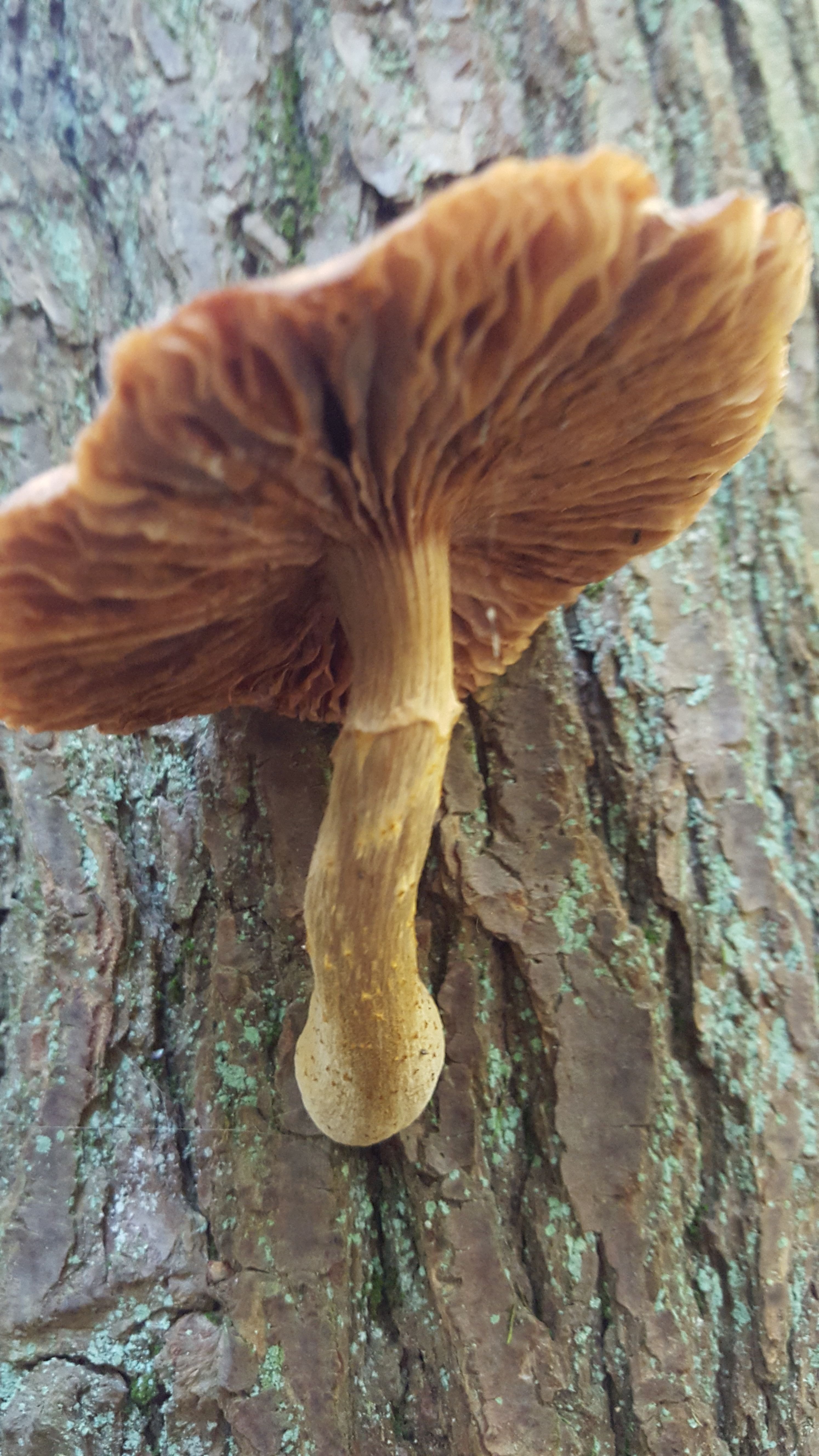
Of course saprobic mushrooms can take a myriad of possible forms. Consider to the left this large Armillaria.
This classically shaped stemmed and gilled mushroom was just one of a big Armillaria colony growing out of a large, dead tree trunk in a forest in Pennsylvania.
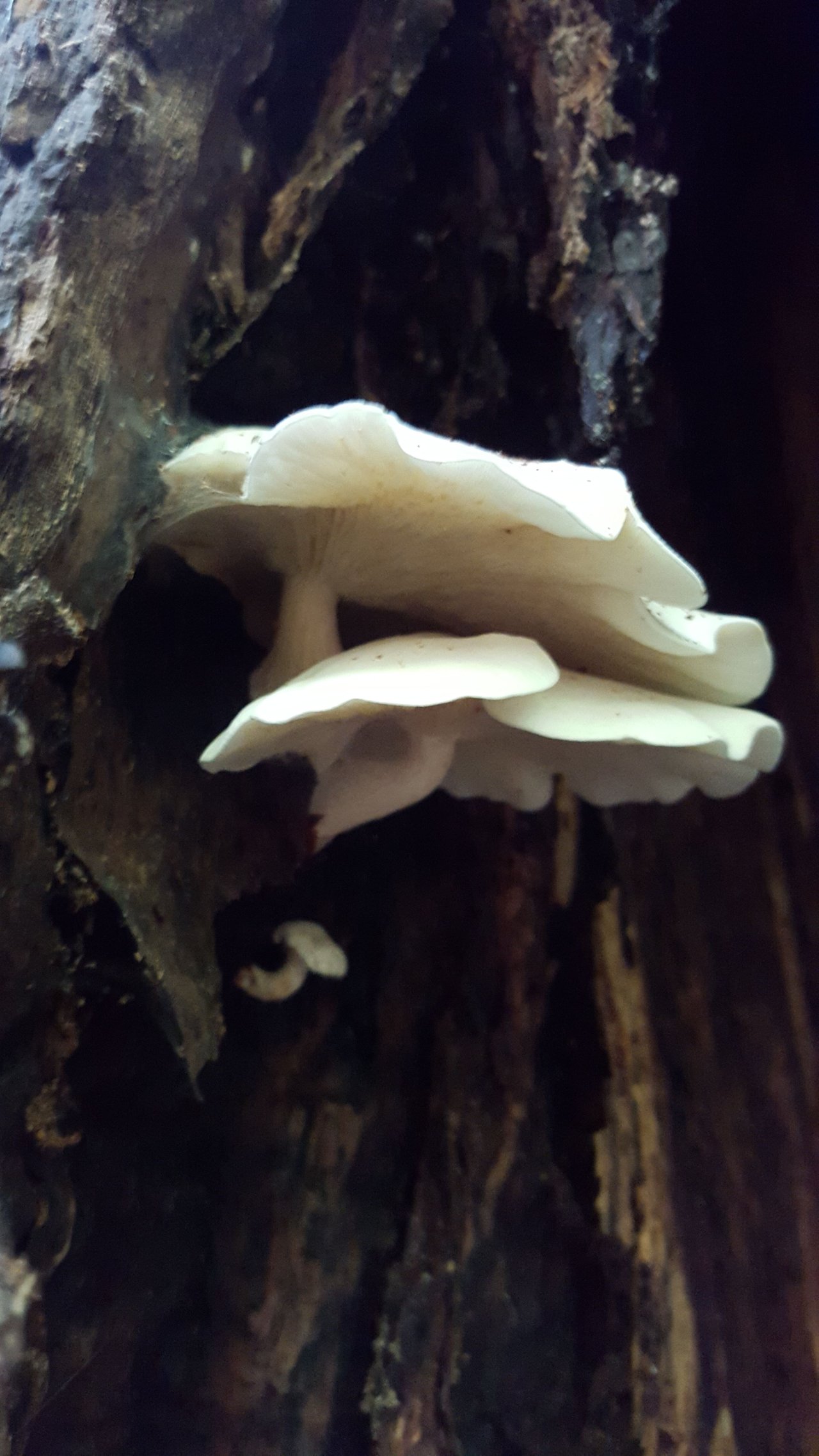
While other mushrooms, like this gorgeous, almost angelic species of Pleurotus mushrooms, grow gilled, but stemless.
Still others, like the unidentified mushrooms at the top of this post, are absolutely tiny, but carry out their work by force of numbers. And, of course, at the smallest scales, there are any of number of miniature, microscopic, or borderline microscopic fungi digesting organic waste all around us.
Whether its wood, fruit, vegetables, or even meat, there is a fungus "designed" by time and chance to be especially capable of digesting basically all organic matter on Earth. Fungi are breaking things down all the time, and the air is filled with their spores, looking for an opening into a new meal. This insatiable appetite is one of the primary drivers of the cycle of life on Earth.
Without saprobic fungi breaking down the old and the dead and freeing up nutrients for new life, the world as we understand it would not exist. Our forests would be impassably full of dead wood and soil would be hidden under an ever increasing layer of slowly deteriorating debris. Life as we know it would not exist.
THIS POST IS NOT INTENDED FOR FORAGING PURPOSES AND TO USE IT FOR THOSE PURPOSES WOULD BE DANGEROUS. DO NOT HUNT WILD MUSHROOMS WITHOUT RELYING ON A COMBINATION OF PROFESSIONAL FIELD GUIDES, IN PERSON PROFESSIONAL GUIDANCE, OR IN PERSON GUIDANCE BY SOMEONE TRUSTWORTHY WHO HAS COPIOUS LOCAL, SPECIALIZED MUSHROOM HUNTING EXPERIENCE. FAILURE TO DO SO CAN RESULT IN GRIEVOUS PERSONAL HARM OR DEATH.
Photos Are My Own Except For:
[3]By Smokefoot (Own work) [CC BY-SA 3.0 (https://creativecommons.org/licenses/by-sa/3.0) or GFDL (http://www.gnu.org/copyleft/fdl.html)], via Wikimedia Commons)
[4]By KoS (Own work) [Public domain], via Wikimedia Commons
Information Sources:
[1]Paul Stamets on Agroforestry.net
[2]"The good, the bad and the tasty: The many roles of mushrooms", K.M.J. de Mattos-Shipley
, K.L. Ford, F. Alberti, A.M. Banks, A.M. Bailey, and G.D. Foster
[3]"Mushrooms Demystified", David Arora, p.6-8
[4]Wikipedia on Ganoderma Genus
[5]Kuo, M. (2017, September). The genus Armillaria. Retrieved from the MushroomExpert.Com Web site
[6]Kuo, M. (2005, February). Oysters: Pleurotoid mushrooms. Retrieved from the MushroomExpert.Com Web site
[7]The Amateur Mycologist on Phallus rubicundus, with relevant internal citations
[8]Wikipedia on Wood
[9]Wikipedia on Lignin
[10]D. Floudas, et.al. (2012) “The Paleozoic Origin of Enzymatic Lignin Decomposition Reconstructed from 31 Fungal Genomes”, Science v.336: 1715–1719
[11]UCMP Berkeley on the Carboniferous Period
